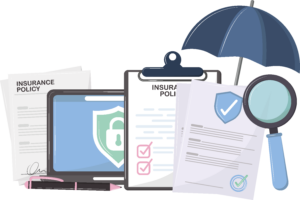Following the UK government announcement on the 21 February, we are now able to understand the plans to living with Covid-19. The start of the withdrawal of the legislation/regulations that came into effect in 2020 will start as of 24 February. There will be further updates/guidance by the government issued over the next couple of months.
The HR team are available to discuss how these changes will impact your operations and to review any sick pay policies/ payments and entitlements as with the removal of the restrictions and free testing kits being withdrawn (with the exception of those set out in point 50), policies will need to be clear who is responsible for the payment of test kits, what to do if an employee has symptoms, what happens if an employee refuses a test, what will employees get paid during the period that they are away from work, how long they will have to stay away from work, and what happens if they breach your policy.
If we hoped the announcement was going to put us back to some form of normality, it won’t and in addition now the decisions and responsibilities of the workplace and workforce sit with the employer (although the government has confirmed it will provide guidance, but that is not imminent, nor is it governed by rules, regulations or legislation).
We also need to consider employee relationships between colleagues and how those will need to be handled if views/ opinions/positive covid tests/risks impacts on working relationships. However, just as important is that your H&S policies are reviewed and updated (see 22 02 2022 newsletter) as this will play a critical part in ensuring that the workplace is safe for not only staff but visitors.
Source: https://www.gov.uk/government/publications/covid-19-response-living-with-covid-19
We have extracted from the government full document (65 pages) some of the most important dates and relevant information that employers need to be aware of and set out below.
See point 39 regarding the Statutory Sick Pay (SSP) support allowance scheme ending (day 1 SSP for Covid absences reverting to day 4 as per normal SSP) and points 58 – 64 guidance for Businesses and other organisations.
Removing the last domestic restrictions
37. The Government will remove remaining domestic restrictions in England, subject to appropriate parliamentary scrutiny.
38. From 24 February, the Government will:
a. Remove the legal requirement to self-isolate following a positive test. Adults and children who test positive will continue to be advised to stay at home and avoid contact with other people. After 5 days, they may choose to take a Lateral Flow Device (LFD) followed by another the next day – if both are negative, and they do not have a temperature, they can safely return to their normal routine. Those who test positive should avoid contact with anyone in an at-risk group, including if they live in the same household. There will be specific guidance for staff in particularly vulnerable services, such as adult social care, healthcare, and prisons and places of detention.
b. No longer ask fully vaccinated close contacts and those under the age of 18 to test daily for 7 days and remove the legal requirement for close contacts who are not fully vaccinated to self-isolate. Guidance will set out the precautions that those who live in the same household as
someone who has COVID-19, or who have stayed overnight in the same household, are advised to take to reduce risk to other people. Other contacts of people with COVID-19 will be advised to take extra care in following general guidance for the public on safer behaviours.
c. End self-isolation support payments and national funding for practical support. The medicine delivery service will no longer be available. People who were instructed to self-isolate before this date will still be able to claim support payments within the next 42 days.
d. Revoke The Health Protection (Coronavirus, Restrictions) (England) (No. 3) Regulations. Local authorities will continue to manage local outbreaks of COVID-19 in high-risk settings as they do with other infectious diseases.
39. From 24 March, the COVID-19 provisions within Statutory Sick Pay and Employment and Support Allowance regulations will end. People with COVID-19 may still be eligible, subject to the normal conditions of entitlement.
40. From 1 April, the Government will update guidance setting out the ongoing steps that people with COVID-19 should take to minimise contact with other people. This will align with the changes to testing set out later in this chapter.
Testing, tracing and certification
41. Testing and tracing have been important throughout the response to COVID-19. The Government’s provision of LFDs enabled people to take a test before meeting family, friends and colleagues, allowing them to protect themselves and others, and breaking chains of transmission. This was particularly important during the period of exceptionally high prevalence driven by the Omicron variant towards the end of 2021. Access to LFDs also enabled contacts of positive cases to test daily in lieu of isolation, reducing the workforce impacts of isolation while identifying positive cases.
42. However, the Government’s free provision of testing at scale has come at a very significant cost to the taxpayer during the pandemic response. The Testing, Tracing and Isolation (TTI) budget in the financial year 2020-21 exceeded that of the Home Office, and the programme cost £15.7 billion in the financial year 2021-22. This level of spending was necessary due to the severe risk posed by COVID-19 when the population did not have a high level of protection.
43. The population now has much stronger protection against COVID-19 than at any other point in the pandemic, due to the vaccination programme, natural immunity, access to antivirals, and increased scientific and public understanding about how to manage risk. For this reason, the Government now assesses that it is time to transition to focus its COVID-19 response towards guidance, while targeting protection on individuals who are most at risk from the virus. Government spending on COVID-19 will reduce significantly in line with this change.
Testing
44. As immunity levels are high, testing and isolation will play a less important role in preventing serious illness. Some changes to testing have already begun. In January, the recommendation for a confirmatory polymerase chain reaction (PCR) test following a positive LFD was changed, and the testing regime in adult social care was also changed to a LFD regime.
45. The Government will implement further changes to the availability of testing in the coming months.
46. From 21 February, the Government is removing the guidance for staff and students in most education and childcare settings to undertake twice weekly asymptomatic testing.
47. From 1 April, the Government will no longer provide free universal symptomatic and asymptomatic testing for the general public in England.
48. Over 2 billion lateral flow tests have been provided across the UK since 2020. UKHSA continues to have good stock levels and will manage these to provide flexibility in future. Ahead of the end of free universal testing in England, it will be necessary for UKHSA to cap the number of tests distributed each day to manage demand. Given that advice to test has and continues to reduce, the Government urges people only to order what they need.
49. The Government will help enable COVID-19 tests to be made available for those who wish to purchase them through the private market. Private markets are established in many European countries – including France, Germany, Italy and Spain – and the United States of America. The Government is working with retailers and pharmacies to help establish the private market in testing.
50. From 1 April, there will be some limited ongoing free testing:
a. Limited symptomatic testing available for a small number of at-risk groups – the Government will set out further details on which groups will be eligible.
b. Free symptomatic testing will remain available to social care staff
Contact tracing
51. From 24 February, routine contact tracing will end. Contacts will no longer be required to self-isolate or advised to take daily tests. Instead, guidance will set out precautions that contacts can take to reduce risk to themselves and other people – and those testing positive for COVID-19 will be encouraged to inform their close contacts so that they can follow that guidance.
52. Local health teams continue to use contact tracing and provide context-specific advice where they assess this to be necessary as part of their role in managing infectious diseases.
COVID-status certification
53. From 1 April, the Government will remove the current guidance on domestic voluntary COVID-status certification and will no longer recommend that certain venues use the NHS COVID Pass. The NHS COVID Pass will remain available within the NHS App for a limited period, to support the use of certification in other parts of the UK. The NHS App will continue to allow individuals access to their vaccination status for international travel, as well as their recovery status for travel to those overseas destinations that recognise it.
Safer behaviours
54. Throughout the pandemic, Government advice and information has been informed by the best scientific evidence available from health agencies, academics, and experts.
55. People will continue to be advised that there are safer behaviours they can adopt to reduce the risk of infection. Precautions remain particularly important to those who are at higher risk if they catch COVID-19, although due to advances in vaccination and therapeutics, this group is now better protected. The majority of people previously considered clinically extremely vulnerable are now advised to follow the same general guidance as everyone else as a result of the protection they have received from vaccination.
56. Individuals can still reduce the risk of catching and passing on COVID-19 by:
a. Getting vaccinated;
b. Letting fresh air in if meeting indoors, or meeting outside;
c. Wearing a face covering in crowded and enclosed spaces, especially where you come into contact with people you do not usually meet, when rates of transmission are high;
d. Trying to stay at home if you are unwell;
e. Taking a test if you have COVID-19 symptoms, and staying at home and avoiding contact with other people if you test positive; and
f. Washing your hands and following advice to ‘Catch it, Bin it, Kill it’.
57. From 1 April, guidance to the public and to businesses will be consolidated in line with public health advice. There will continue to be specific guidance for those whose immune system means they are at higher risk of serious illness from COVID-19 despite vaccination.
Businesses and other organisations
58. Employers and businesses have also taken significant steps over the pandemic to mitigate the risks of COVID-19 within their settings. The Government has lifted the majority of legal requirements on businesses and continues to provide ‘Working Safely’ guidance setting out the steps that employers can take to reduce risk in their workplaces.
59. From 24 February, workers will not be legally obliged to tell their employers when they are required to self-isolate. Employers and workers should follow Government guidance for those with COVID-19.
60. From 1 April, the Government will remove the health and safety requirement for every employer to explicitly consider COVID-19 in their risk assessments. The intention is to empower businesses to take responsibility for implementing mitigations that are appropriate for their circumstances. Employers that specifically work with COVID-19, such as laboratories, must continue to undertake a risk assessment that considers COVID-19.
61. From 1 April, the Government will replace the existing set of ‘Working Safely’ guidance with new public health guidance. Employers should continue to consider the needs of employees at greater risk from COVID-19, including those whose immune system means they are at higher risk of serious illness from COVID-19. The Government will consult with employers and businesses to ensure guidance continues to support them to manage the risk of COVID-19 in workplaces.
Ventilation
62. The Government will continue to promote and support good ventilation. Employers and businesses should continue identifying poorly ventilated spaces and take steps to improve fresh air flow.
63. There is increasing evidence of the importance of circulating fresh air in reducing the risk of COVID-19 transmission. Ventilation also helps with reducing transmission of other respiratory infections such as influenza, with some research showing that being in a room with fresh air can in some cases reduce the risk of airborne transmission of COVID-19 by over 70%. There are also potential wider benefits of good ventilation, for health, concentration, and lower absence rates. The Government has responded to this evidence through:
a. Public communications campaigns and comprehensive business guidance on ventilation and fresh air;
b. Providing over 350,000 CO2 monitors to state-funded education settings backed by £25 million of funding, and up to 9,000 high efficiency particulate air (HEPA) cleaning units for the small number of education settings where poor ventilation could not be quickly rectified;
c. Enabling local authorities to use their allocations from the £60 million Adult Social Care Omicron Support Fund, at their discretion, to audit and improve fresh air in adult social care; and;-
d. Completing a ventilation audit of the central government estate.
64. The Government is also carrying out further ventilation research and the Government’s Chief Scientific Adviser has commissioned a report from the Royal Academy of Engineering on how our built environment could be made more infection resilient, to be published this May. The Government will carefully consider its recommendations, alongside the ongoing research.





